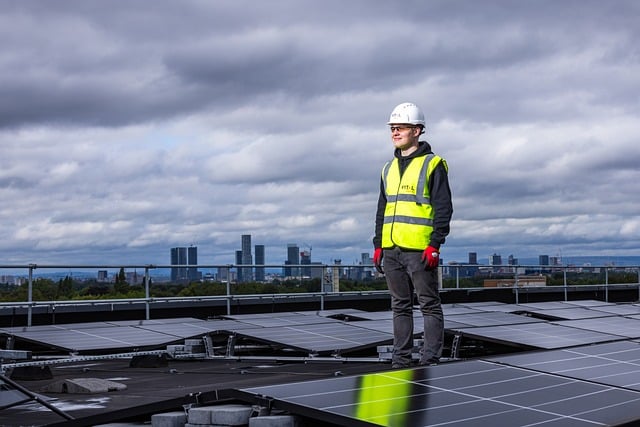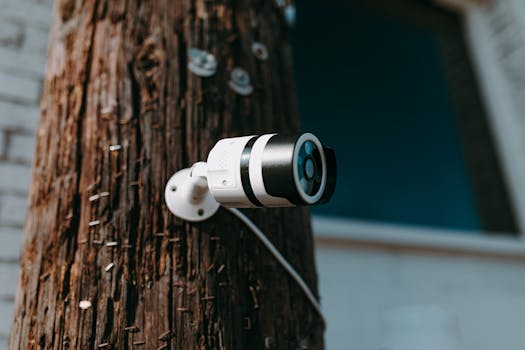“Maximize Your Solar Investment: Real-Time Performance Monitoring for Commercial Properties.”
Solar performance monitoring for commercial properties involves the systematic tracking and analysis of solar energy systems to ensure optimal efficiency and output. This process utilizes advanced technologies and software to collect data on energy production, system health, and environmental conditions. By continuously monitoring key performance indicators, property owners and managers can identify issues, optimize energy usage, and maximize return on investment. Effective solar performance monitoring not only enhances the reliability of solar installations but also supports sustainability goals by providing insights into energy consumption patterns and potential areas for improvement.
Benefits Of Solar Performance Monitoring For Commercial Properties
Solar performance monitoring for commercial properties has emerged as a critical component in maximizing the efficiency and effectiveness of solar energy systems. As businesses increasingly turn to renewable energy sources to reduce operational costs and enhance sustainability, understanding the benefits of solar performance monitoring becomes essential. This practice not only ensures optimal energy production but also contributes to long-term financial savings and environmental stewardship.
One of the primary advantages of solar performance monitoring is the ability to track energy production in real-time. By utilizing advanced monitoring systems, property owners can gain insights into how much energy their solar panels are generating at any given moment. This data is invaluable, as it allows businesses to compare actual performance against expected output based on weather conditions and system specifications. Consequently, any discrepancies can be quickly identified and addressed, ensuring that the solar installation operates at peak efficiency.
Moreover, solar performance monitoring facilitates proactive maintenance. Regularly analyzing performance data can help detect potential issues before they escalate into significant problems. For instance, if a particular solar panel is underperforming, it may indicate a malfunction or shading issue that requires immediate attention. By addressing these concerns promptly, businesses can avoid costly repairs and downtime, ultimately preserving their investment in solar technology. This proactive approach not only enhances the longevity of the solar system but also ensures that energy production remains consistent and reliable.
In addition to maintenance benefits, solar performance monitoring can significantly impact a commercial property’s bottom line. By optimizing energy production, businesses can maximize their return on investment. The data collected through monitoring systems can also be used to analyze energy consumption patterns, allowing property owners to make informed decisions about energy usage. For example, if monitoring reveals that energy production peaks during certain hours, businesses can adjust their operations to align with these times, thereby reducing reliance on grid electricity and lowering utility bills.
Furthermore, the insights gained from solar performance monitoring can enhance a company’s sustainability profile. As consumers and stakeholders increasingly prioritize environmental responsibility, demonstrating a commitment to renewable energy can improve a business’s reputation. By showcasing the effectiveness of their solar systems through performance data, companies can attract eco-conscious customers and investors, thereby gaining a competitive edge in the market. This alignment with sustainability goals not only fosters goodwill but also positions businesses as leaders in the transition to a greener economy.
Another significant benefit of solar performance monitoring is its role in compliance and reporting. Many jurisdictions require businesses to report their energy production and consumption as part of sustainability initiatives or regulatory frameworks. Having a robust monitoring system in place simplifies this process, providing accurate and timely data that can be easily shared with stakeholders. This transparency not only fulfills regulatory obligations but also reinforces a company’s commitment to sustainability and responsible energy use.
In conclusion, the benefits of solar performance monitoring for commercial properties are multifaceted and far-reaching. By enabling real-time tracking of energy production, facilitating proactive maintenance, optimizing financial returns, enhancing sustainability profiles, and simplifying compliance, solar performance monitoring serves as an indispensable tool for businesses investing in solar energy. As the demand for renewable energy continues to grow, embracing these monitoring practices will be crucial for commercial properties aiming to thrive in an increasingly competitive and environmentally conscious landscape.
Key Metrics To Track In Solar Performance Monitoring

In the realm of solar performance monitoring for commercial properties, understanding key metrics is essential for optimizing energy production and ensuring a return on investment. As businesses increasingly turn to solar energy to reduce operational costs and enhance sustainability, tracking specific performance indicators becomes crucial. These metrics not only provide insights into the efficiency of solar systems but also help in identifying areas for improvement.
One of the primary metrics to monitor is the energy output, typically measured in kilowatt-hours (kWh). This figure represents the total amount of electricity generated by the solar panels over a specific period. By comparing actual energy output against expected production, businesses can assess the performance of their solar systems. This comparison is often facilitated by using performance ratio (PR), which is a dimensionless number that indicates the efficiency of a solar power system. A higher PR suggests that the system is performing well relative to its potential, while a lower PR may signal issues such as shading, dirt accumulation, or equipment malfunction.
Another critical metric is the capacity factor, which measures the actual output of a solar system as a percentage of its maximum potential output over a given time frame. This metric is particularly useful for understanding how well the solar installation is performing relative to its design specifications. A low capacity factor may indicate that the system is not being utilized to its full potential, prompting further investigation into possible causes such as suboptimal panel orientation or inverter inefficiencies.
In addition to energy output and capacity factor, monitoring the system’s degradation rate is vital. Solar panels typically have a lifespan of 25 to 30 years, but their efficiency can decline over time. By tracking the degradation rate, property owners can anticipate when maintenance or replacement may be necessary, thereby avoiding unexpected costs and ensuring continuous energy production. Regular performance assessments can help identify any significant drops in efficiency, allowing for timely interventions.
Moreover, it is essential to keep an eye on the inverter performance, as inverters play a crucial role in converting the direct current (DC) generated by solar panels into alternating current (AC) for use in commercial properties. Monitoring metrics such as inverter efficiency and downtime can provide insights into the overall health of the solar system. If an inverter is underperforming or frequently offline, it can significantly impact the overall energy output, necessitating immediate attention.
Furthermore, environmental factors should not be overlooked. Weather conditions, such as temperature, sunlight intensity, and shading from nearby structures, can all influence solar performance. By correlating energy output with weather data, businesses can better understand how external conditions affect their solar systems. This understanding can lead to strategic decisions, such as optimizing panel placement or investing in additional shading solutions.
Lastly, financial metrics, including return on investment (ROI) and payback period, are crucial for evaluating the economic viability of solar installations. By analyzing these financial indicators alongside performance metrics, property owners can make informed decisions about future investments in solar technology.
In conclusion, effective solar performance monitoring for commercial properties hinges on tracking a variety of key metrics. By focusing on energy output, capacity factor, degradation rates, inverter performance, environmental influences, and financial returns, businesses can ensure their solar systems operate at peak efficiency. This comprehensive approach not only maximizes energy production but also enhances the overall sustainability and profitability of commercial properties.
Common Challenges In Solar Performance Monitoring And Solutions
Solar performance monitoring for commercial properties is an essential aspect of ensuring that solar energy systems operate at their peak efficiency. However, several challenges can arise in this process, which can hinder the effectiveness of solar installations. Understanding these challenges and their corresponding solutions is crucial for property owners and facility managers who wish to maximize their return on investment in solar technology.
One of the most common challenges in solar performance monitoring is the lack of real-time data. Many commercial properties rely on outdated monitoring systems that do not provide immediate feedback on energy production and system performance. This delay can lead to prolonged periods of inefficiency, as issues may go unnoticed until they result in significant energy losses. To address this, property owners should invest in advanced monitoring solutions that offer real-time data analytics. These systems can provide instant alerts for any performance anomalies, allowing for swift corrective actions and minimizing downtime.
Another significant challenge is the complexity of solar energy systems themselves. With various components such as inverters, panels, and batteries, it can be difficult to pinpoint the source of a performance issue. This complexity often leads to confusion and misdiagnosis, resulting in unnecessary maintenance costs. To mitigate this issue, implementing a comprehensive monitoring platform that integrates data from all system components can be beneficial. Such platforms can provide a holistic view of system performance, making it easier to identify specific issues and streamline maintenance efforts.
Moreover, environmental factors can significantly impact solar performance, yet they are often overlooked in monitoring efforts. Weather conditions, shading from nearby structures, and seasonal changes can all affect energy production. For instance, a sudden increase in shading due to new construction can drastically reduce output, but without proper monitoring, this may go unnoticed until energy bills reflect the inefficiency. To counteract this challenge, property owners should consider incorporating weather data into their monitoring systems. By analyzing environmental conditions alongside energy production, they can better understand the factors affecting performance and make informed decisions about system adjustments or enhancements.
Additionally, the integration of solar performance monitoring with existing building management systems can pose a challenge. Many commercial properties utilize various software solutions for energy management, and integrating solar data into these systems can be complex. However, this integration is vital for a comprehensive understanding of overall energy consumption and efficiency. To overcome this hurdle, property owners should seek out monitoring solutions that offer compatibility with existing building management systems. This approach not only simplifies data management but also enhances the ability to optimize energy usage across the entire property.
Lastly, the lack of skilled personnel to interpret monitoring data can hinder effective solar performance management. Even with advanced monitoring systems in place, without trained professionals to analyze the data, property owners may miss critical insights. To address this challenge, investing in training for existing staff or hiring specialized consultants can be invaluable. By equipping personnel with the necessary skills to interpret and act on monitoring data, commercial properties can ensure that their solar systems operate efficiently and effectively.
In conclusion, while solar performance monitoring for commercial properties presents several challenges, proactive solutions exist to address these issues. By investing in real-time monitoring systems, integrating environmental data, ensuring compatibility with existing management systems, and training personnel, property owners can significantly enhance the performance and reliability of their solar energy systems. Ultimately, these efforts will lead to improved energy efficiency, reduced operational costs, and a greater return on investment in solar technology.
The Future Of Solar Performance Monitoring Technology
As the adoption of solar energy continues to rise, the need for effective solar performance monitoring technology becomes increasingly critical, particularly for commercial properties. The future of this technology is poised to transform how businesses manage their solar investments, ensuring optimal performance and maximizing return on investment. With advancements in data analytics, artificial intelligence, and IoT (Internet of Things) integration, the landscape of solar performance monitoring is evolving rapidly.
One of the most significant trends in solar performance monitoring is the integration of advanced data analytics. By harnessing the power of big data, businesses can gain deeper insights into their solar systems’ performance. This data-driven approach allows for real-time monitoring of energy production, identifying inefficiencies, and predicting maintenance needs before they become critical issues. As a result, commercial property owners can make informed decisions that enhance the longevity and efficiency of their solar installations.
Moreover, the incorporation of artificial intelligence into solar performance monitoring systems is revolutionizing the way businesses interact with their energy assets. AI algorithms can analyze vast amounts of data from solar panels, weather patterns, and energy consumption trends to optimize energy production. For instance, predictive analytics can forecast energy output based on historical data and current weather conditions, enabling businesses to adjust their energy usage accordingly. This proactive approach not only improves energy efficiency but also reduces operational costs, making solar energy an even more attractive option for commercial properties.
In addition to data analytics and AI, the rise of IoT technology is further enhancing solar performance monitoring capabilities. IoT devices can be installed on solar panels to collect real-time data on their performance, including temperature, energy output, and potential shading issues. This information can be transmitted to centralized monitoring systems, allowing property managers to track performance from anywhere in the world. The ability to monitor solar systems remotely not only streamlines maintenance processes but also empowers businesses to respond quickly to any performance issues, minimizing downtime and maximizing energy production.
As the technology continues to advance, the future of solar performance monitoring will likely see the emergence of more user-friendly interfaces and mobile applications. These tools will enable commercial property owners to access performance data easily, visualize trends, and receive alerts about potential issues. By simplifying the monitoring process, businesses can engage more actively with their solar systems, fostering a culture of energy efficiency and sustainability within their organizations.
Furthermore, the integration of blockchain technology into solar performance monitoring is an exciting development on the horizon. Blockchain can provide a secure and transparent way to track energy production and consumption, facilitating peer-to-peer energy trading among commercial properties. This innovative approach not only enhances the economic viability of solar energy but also encourages collaboration among businesses to optimize energy use and reduce costs.
In conclusion, the future of solar performance monitoring technology for commercial properties is bright and full of potential. With advancements in data analytics, artificial intelligence, IoT integration, and even blockchain, businesses are better equipped than ever to manage their solar investments effectively. As these technologies continue to evolve, they will not only enhance the efficiency and reliability of solar systems but also contribute to a more sustainable energy future. By embracing these innovations, commercial property owners can ensure that their solar installations perform at their best, ultimately leading to significant cost savings and a reduced environmental footprint.
Q&A
1. **Question:** What is solar performance monitoring?
**Answer:** Solar performance monitoring is the process of tracking and analyzing the energy output and efficiency of solar energy systems to ensure they are operating optimally.
2. **Question:** Why is solar performance monitoring important for commercial properties?
**Answer:** It is important because it helps identify issues, optimize energy production, ensure compliance with energy contracts, and maximize return on investment.
3. **Question:** What key metrics are typically monitored in solar performance?
**Answer:** Key metrics include energy production (kWh), system efficiency, performance ratio, and environmental impact (e.g., CO2 emissions avoided).
4. **Question:** How can commercial properties implement solar performance monitoring?
**Answer:** They can implement it by using monitoring software and hardware solutions that provide real-time data, analytics, and alerts for system performance issues.
Conclusion
Solar performance monitoring for commercial properties is essential for optimizing energy production, ensuring system efficiency, and maximizing return on investment. By utilizing advanced monitoring technologies, property owners can track real-time performance metrics, identify potential issues, and implement timely maintenance. This proactive approach not only enhances the reliability of solar systems but also contributes to sustainability goals and cost savings. Ultimately, effective solar performance monitoring is crucial for the long-term success and viability of solar energy investments in commercial settings.




